Published on April 13, 2020
“While many people want to talk about the problems facing the region, we are the only organization proposing any solutions and willing to invest in the river’s restoration. Talk won’t solve the problems facing the East Fork of the South Fork of the Salmon River. If we truly care about our watershed, we need to act.” – Laurel Sayer, President of Midas Gold Idaho
Solutions, not more talk, are needed.
The East Fork of the South Fork of the Salmon River needs help. We’ve been raising awareness about the problems facing the watershed for years. However, Midas Gold’s efforts go beyond talking about the problem. Even though we did not cause the issues facing the river, we are actively taking steps to fix them.
To understand the solutions we are proposing, you have to know about the problems that persist in the historical Stibnite Mining District.
High Levels of Arsenic & Antimony
Water quality in the historical Stibnite Mining District has been impacted by more than a century of mining activity, none of which involved Midas Gold and most of which took place before modern environmental regulations existed. There are over three million tons of tailings from the World War II era laying unconstrained in Meadow Creek Valley, capped by an additional seven million tons of spent heap leach ore. There are numerous other open pits, mine tunnels and waste rock dumps across the site, plus a former mill site, smelter site and several town sites.
With these conditions, it is not unexpected to see elevated levels of arsenic and antimony in ground and surface water. Unfortunately, most of the responsible parties entered settlements with the EPA and were granted a release from liability. Therefore, elevated levels of metals will continue to be a problem unless action is taken by someone new. In one of those releases, the EPA also agreed not to sue any of the federal government agencies that had been involved in promoting and funding the mining activities that originally created the issues.
Midas Gold has proposed to remove the spent ore, reprocess the historic tailings, and move tens of millions of tons of waste rock from next to the river, all resulting in improvements to water quality.
Degraded Fish Habitat
During the 1930s, miners working in the historical Stibnite Mining District cut off access to pristine fish habitat in the upper stretches of the East Fork of the South Fork of the Salmon River by digging a tunnel around, and opening up, the Yellow Pine Pit. Today, the river flows into this abandoned mine pit that salmon cannot swim past. Fish must also cope with elevated sediment levels, which can clog their gills, make it hard for them to see food and reduce their ability to fight diseases. Excessive sediment also chokes off the oxygen supply to the gravel beds, reducing productivity of critical salmon spawning habitat.
Restoring migration passage and repairing the Yellow Pine pit area to allow the river to flow naturally will take major financial and operational resources. We are committed to seeing both of these things through.
Sedimentation
Hundreds of tons of sediment enters the river each year from Blowout Creek, where an earthen dam failed in the 1960s. This is the river’s single largest source of sedimentation and has also drained a large area of once functional wetlands. Midas Gold plans to repair this drainage and restore the wetlands.
Our Solutions
Over a century of largely unregulated mining activity created the problems in the headwaters of the East Fork of the South Fork of the Salmon River. We have a plan to use modern mining to fund the cleanup of the river and impacted areas.
However, we recognize some of the problems facing the river should not wait. Some things could be addressed now, on an interim basis, to immediately improve water quality. For the last several years, we have been working closely with the Environmental Protection Agency (EPA), the Idaho Department of Environmental Quality and Idaho tribes to gain permission to take immediate action to improve water quality before mining begins, even though we created none of the issues causing the problems.
The EPA is currently reviewing a proposed plan from our team that, if accepted, would allow restoration work to improve water quality begin this summer.
Subsequently, assuming our Plan of Restoration and Operations is approved, we will reconnect native salmon to their spawning grounds for the first time in 80 years. We will improve water quality and fish habitat by removing, reprocessing and properly storing the abandoned mining waste that threaten the river and groundwater. Our team will also repair the damage from a failed dam to permanently keep sediment out of the river. We will do all of this and employ over 500 Idahoans to help us make it happen. You can learn more about these solutions on our river page.
While many people want to talk about the problems facing the region, we are the only organization proposing any solutions and who are willing to invest in the river’s restoration. No one else is offering to come to the table. The solutions will take tens of millions of dollars, and Midas Gold can only fund such large scale clean up through the redevelopment of the Stibnite Mining District. Talk won’t solve the problems facing the East Fork of the South Fork of the Salmon River. If we truly care about our watershed, we need to act.

